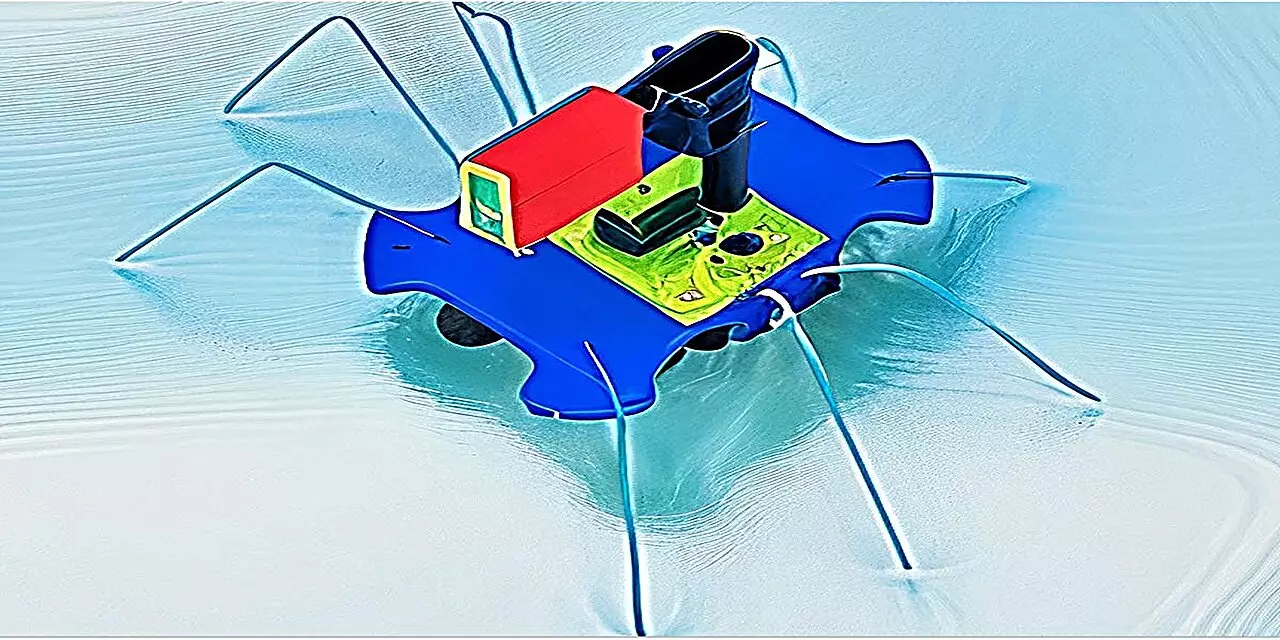Aquatic robotics have been given a significant boost by the innovative work of researchers at Binghamton University, State University of New York. Their groundbreaking development of a self-powered “bug” capable of skimming across water surfaces has the potential to revolutionize the field. Published in the journal Advanced Materials Technologies, this new technology opens up a world of possibilities for the future of autonomous aquatic nodes.
With predictions pointing towards the integration of over one trillion autonomous nodes in various human activities by 2035 as part of the “internet of things,” the need for reliable and efficient aquatic robotics is more apparent than ever. However, with 71% of the Earth’s surface covered in water, challenges such as critical environmental and logistical issues arise. This is where the U.S. Defense Advanced Research Projects Agency (DARPA) stepped in with the Ocean of Things program to address these challenges head-on.
Professor Seokheun “Sean” Choi, along with Anwar Elhadad, Ph.D., and Ph.D. student Yang “Lexi” Gao from Binghamton University, have been at the forefront of developing bacteria-powered biobatteries with an impressive 100-year shelf life. Their latest creation, the self-powered bug, utilizes similar technology for improved reliability under adverse conditions compared to solar, kinetic, or thermal energy systems.
The key to the bug’s power generation lies in the Janus interface, which has one hydrophilic side and one hydrophobic side. This design allows the device to intake nutrients from the water and retain them to fuel bacterial spore production. When conditions are favorable, the bacteria switch to vegetative cells to generate power, reverting to spores in unfavorable conditions to extend the operational life of the robot.
The Binghamton team’s research has demonstrated power generation capabilities close to 1 milliwatt, sufficient to power the robot’s mechanical movements and various sensors. These sensors can collect valuable environmental data such as water temperature, pollution levels, vessel and aircraft movements, and aquatic animal behaviors. This versatility enables the robots to be deployed to any location as needed, a significant upgrade from stationary sensors like “smart floats.”
Moving forward, the next phase of development involves identifying the most efficient bacteria for energy production in harsh ocean conditions. While common bacterial cells have been used in the current design, further research is needed to understand the microbial composition of ocean environments. Previous studies have shown that the combination of multiple bacterial cells can enhance sustainability and power generation, paving the way for future advancements in aquatic robotics.
The development of self-powered aquatic robots marks a significant milestone in the field of robotics and environmental monitoring. With their ability to navigate water surfaces autonomously and collect vital data, these robots have the potential to transform various industries, from marine research to environmental conservation. As researchers continue to refine the technology and explore new avenues for improvement, the future looks promising for the widespread adoption of autonomous aquatic nodes.



Leave a Reply